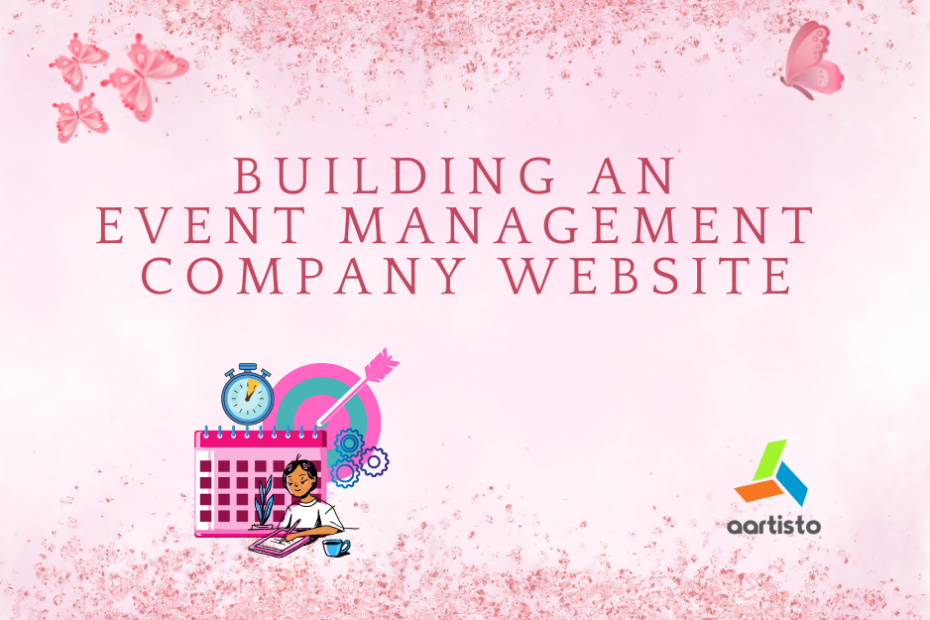Event Management Company Website
An event management company’s online presence can have a massive impact on its growth and success. According to research conducted by HubSpot, the website is an important marketing tool, which shows that about 78% of people search for events on the web.
An event management website helps the organization reach the right target audience while increasing engagement. It helps to build an online presence and expand one’s reach to new audiences regardless of geographical boundaries. The existence of a website directly helps to improve the credibility of the event planner.
Another advantage of having an event management website is 24 hours availability. Even outside of business hours, the event’s website can provide key information to attendees and help generate business leads. Most event management companies now have websites, and by being offline one can lose out to competitors.
A website is the foundation of one’s online strategy and provides a platform for event planners to express themselves with aesthetic images, videos, and more. The client can easily preview the previous work and make an instant decision.
While an event management job is challenging, creating your website can be even more challenging. Creating your website can help make or break your image as a professional event planner. The main purpose of the website is to strategically guide users through the decision-making process.
Essentials components of an event management website
Given below are some of the essential components an event planner should have on their website to maximize conversions.
An attractive landing Page or homepage
The landing page is one of the most important pages on an event planner’s website. This is where the first appearance of this brand was created. Make the page easy to navigate with effective call-to-action buttons.
A call to action is an important element of a web page that encourages the user to take action. Buttons should have a bold design with a clear advantage and should be short in length. “Book now” or “Learn more” are some prime examples of effective CTA buttons. Header images and graphics should be displayed at the top of the page.
They help the user get a vision and set the tone of the company on the website. You can also add a section that includes frequently asked questions that solve the user’s query instantly and helps save time. It helps users make decisions.
Portfolio
A portfolio is where one showcases their skills as an event planner. Hence, the portfolio should be beautifully presented to provide a holistic view to help with various events. The portfolio section of the event management website should have a clean and classic design.
The category should provide images of different types of events like weddings, birthdays, non-profit events, etc. in a structured manner. It helps you focus on important and relevant sections of the website. A minimal design with an eye-catching portfolio portrays one’s experience as an event planner.
Contact/ Registration Form
A contact form is one of the final steps in a user’s decision-making process. Research suggests that the higher the number of steps in the registration process, the higher the bounce rate. Hence, reducing the number of steps and keeping the process short will ultimately help in closing the sale effectively.
The details in the contact form usually include name, email address, event type, and contact number. Event planners should also include their contact information and address. The contact form can be part of the home page or it can be a completely separate page.
Photo Gallery/Media
These visual cues play an important role in the customer’s decision-making journey as they provide them with insight into the overall event experience. It is essential to present one’s work creatively keeping in mind the different segments of the target audience. Viewers can connect with the event and visualize themselves while watching the images.
Along with pictures of events, a little information about them will help the audience better understand the concepts and purpose.
Event descriptions are short descriptions that can be added below images on a page to help the user understand the theme and the type of event they are clicking on.
About Us
The About Us page allows visitors to learn about the company. When visitors arrive on the landing page, they expect introductory content such as what/when/where/how details, and everything related to event management. The event is a great way to communicate the company’s mission and vision while highlighting some key achievements. It helps the customer to connect better with the company.
Testimonials and Social Proof
Word of mouth is one of the most powerful forces in marketing today. One of the main reasons people add social proof and testimonials to their websites. A testimonial from an influential expert or past attendee can go a long way to add credibility to your event.
Studies show that 70% of consumers look at product reviews before making a purchase, and product reviews are 12 times more reliable than product descriptions from manufacturers. Therefore, it is important to include customer testimonials on the homepage. This makes the company more accessible. Read more to learn how testimonials can help your business.
About the Team
The group section is an important part of an event management website. It enables the audience to see the real workers behind the event. Highlighting team members builds trust and connection with potential customers. A brief description of the staff and a sense of team spirit should be conveyed.
